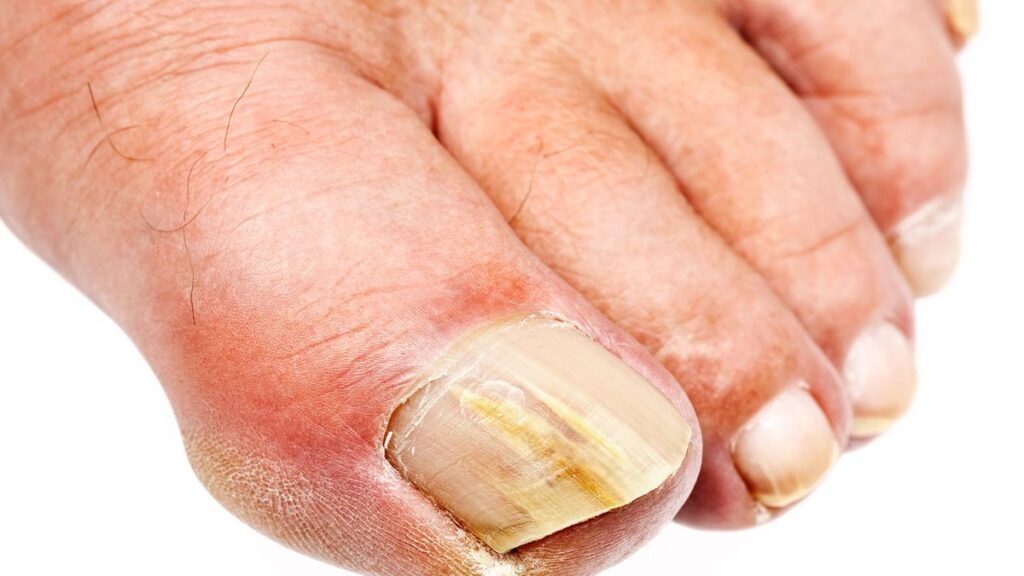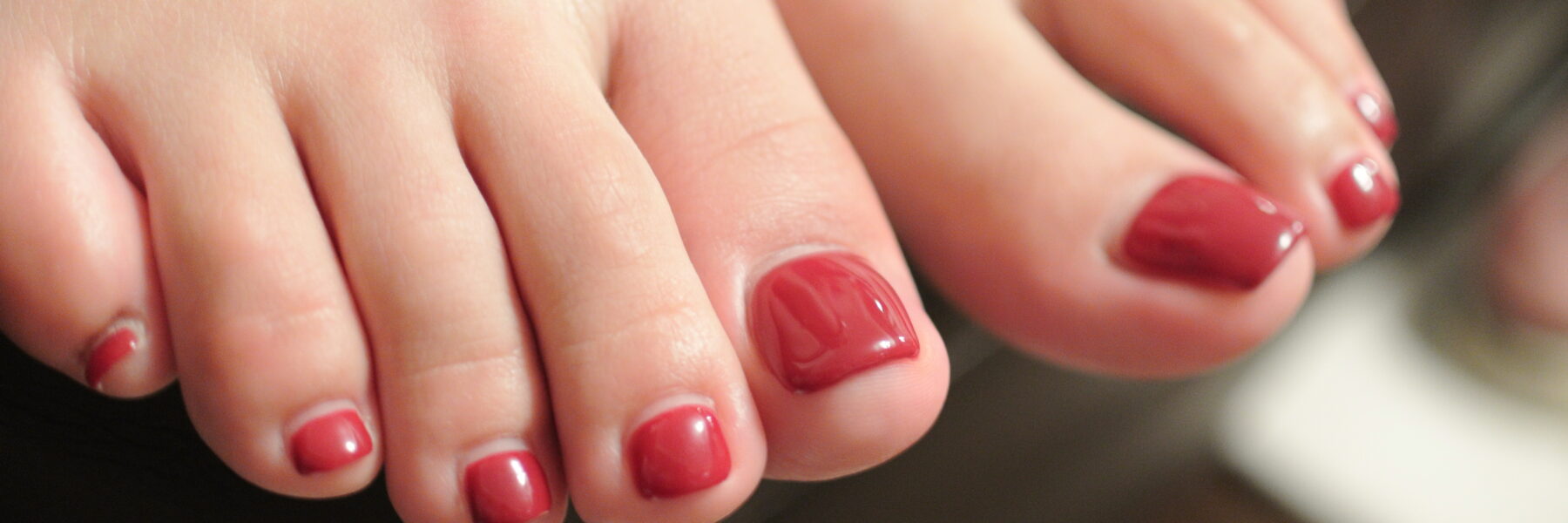The odor often associated with cheesy-smelling toenails is typically due to a fungal infection, particularly one caused by a type of fungi called dermatophytes. This condition is commonly known as toenail fungus or onychomycosis.
When fungi infect the toenails, they can cause changes in the nail’s appearance, texture, and odor. The fungus thrives in warm, moist environments, making the toes an ideal place for it to grow and spread. As the infection progresses, it can lead to toenails becoming discolored, thickened, brittle, and emitting a foul odor resembling cheese or a strong, unpleasant scent.
The odor is a result of the fungus breaking down the keratin in the nail, producing volatile organic compounds (VOCs) that contribute to the characteristic smell. Additionally, the buildup of debris and dead skin cells around and underneath the affected nail can exacerbate the odor.
Toenail fungal infections can be challenging to eradicate and may require treatment with antifungal medications, topical solutions, or in severe cases, oral medications prescribed by a healthcare professional.
How do toenails develop unpleasant odors?

These contributing factors help individuals comprehend the importance of proper foot hygiene, regular inspection of toenails, and seeking prompt treatment to prevent and manage toenail odor caused by infections or other related issues.
Description of the Smell
Toenail odor, often likened to a cheese-like or pungent smell, is primarily due to the presence of fungal or bacterial infections affecting the toenails. The odor can vary from mild to strong, depending on the severity of the infection. It’s characterized by a distinct musty, sour, or sometimes foul scent, particularly noticeable when shoes are removed or when toes are in close proximity.
The smell arises from the breakdown of keratin—a protein that forms the structure of nails—by fungi or bacteria. As these microorganisms thrive in warm, moist environments, they infiltrate the toenails, causing alterations in texture, color, and emitting the distinct odor. Additionally, the buildup of debris, dead skin cells, and moisture around the affected nails exacerbates the unpleasant smell.
Factors Contributing to the Odor
Fungal Infections
Dermatophytes, the most common culprits behind fungal infections in toenails, create an environment ripe for odor production. They penetrate the nail plate, leading to its thickening, discoloration, and emitting a distinct smell due to the breakdown of keratin.
Bacterial Infections
Certain bacteria, such as Pseudomonas aeruginosa, can also cause foul-smelling toenails. These bacteria thrive in warm, damp conditions and can colonize beneath the nail, resulting in an unpleasant odor.
Sweat and Moisture Buildup
Sweaty or damp feet create an ideal environment for fungal and bacterial growth, fostering the proliferation of microorganisms that contribute to the odor. Inadequate ventilation, tight footwear, or prolonged moisture exposure contribute to this buildup.
Poor Hygiene
Inadequate foot hygiene, such as infrequent washing, improper drying of feet, or neglecting to change socks regularly, can contribute to the accumulation of bacteria and fungi, exacerbating toenail odor.
Skin and Debris Accumulation
Dead skin cells, dirt, and debris that accumulate around and under the toenails can provide a fertile breeding ground for microorganisms, intensifying the unpleasant smell.
What leads to toenails emitting a cheese-like smell?
These various causes of toenail odor allows individuals to identify potential risk factors, take preventive measures, and seek appropriate treatment to address fungal, bacterial, or hygiene-related issues contributing to the unpleasant smell.
Fungal Infections
Introduction to Toenail Fungal Infections
Toenail fungal infections, known as onychomycosis, are predominantly caused by dermatophytes, molds, or yeast. These infections are quite common and occur when fungi penetrate the nail plate, leading to discoloration, thickening, and altering the nail’s texture. Initially, fungal infections may appear as a small spot on the nail, eventually spreading if left untreated.
Types of Fungi Responsible
Dermatophytes, including Trichophyton, Epidermophyton, and Microsporum species, are the primary culprits behind toenail fungal infections. However, non-dermatophyte molds and yeasts like Candida may also cause similar nail conditions, albeit less frequently.
How Fungi Affect Toenails
Fungi thrive in warm, moist environments, commonly found in closed shoes, gym showers, or swimming pool areas. When these microorganisms invade the nail, they begin to feed on the keratin, causing the nail to become discolored, thickened, brittle, and emit a characteristic odor resembling cheese or a musty smell. The breakdown of keratin by fungi contributes to the formation of foul-smelling compounds, adding to the unpleasant odor.
Bacterial Infections
Overview of Bacterial Involvement
While fungal infections are more common in causing toenail odor, bacterial infections can also play a role. Bacterial infections of the toenails, such as those caused by Pseudomonas aeruginosa, usually occur secondary to trauma or injury to the nail. These infections are more prevalent in moist environments and can contribute to an unpleasant odor.
Specific Bacteria and Their Impact on Toenails
Pseudomonas aeruginosa, a common bacterium, can cause a greenish discoloration of the nail and emit an odor due to the production of pigments and volatile compounds. When it infects the nail bed, it can lead to changes in the nail’s appearance and contribute to the characteristic cheesy or foul smell.
Other Potential Causes
Poor Hygiene Practices
Inadequate foot hygiene, such as infrequent washing, improper drying of feet, and neglecting to change socks regularly, can lead to the accumulation of bacteria and fungi, contributing to toenail odor.
Sweat and Moisture Buildup
Excessive sweat or moisture in shoes and socks create a conducive environment for fungal and bacterial growth, leading to the proliferation of microorganisms that contribute to the unpleasant smell.
Skin and Debris Accumulation
Dead skin cells, dirt, and debris that accumulate around and under the toenails provide a breeding ground for microorganisms, intensifying the unpleasant smell. Proper hygiene practices and regular cleaning can help mitigate this issue.
How do chemical compounds contribute to toenail odor resembling?

The combined action of these chemical compounds, especially the sulfur-containing ones, contributes significantly to the characteristic foul smell resembling cheese that is often associated with toenail fungal infections.
Role of Fungi in Nail Degradation
Fungi play a significant role in the degradation of nails, particularly toenails affected by fungal infections. When fungi, such as dermatophytes, invade the toenail, they secrete enzymes like keratinases. These enzymes break down the tough protein keratin, which is the primary component of nails and skin.
Keratinases facilitate the decomposition of keratin into smaller fragments, disrupting the structural integrity of the nail. As a result, the affected nail becomes discolored, thickened, and brittle. Fungi feed on the keratin debris, further contributing to the nail’s degradation. This process weakens the nail’s structure and compromises its appearance, often emitting an unpleasant odor due to the breakdown of keratinaceous material.
Chemical Compounds Produced Causing the Cheese-like Smell
The breakdown of keratin by fungi results in the production of various chemical compounds that contribute to the distinctive cheese-like odor associated with affected toenails.
Volatile Organic Compounds (VOCs)
Fungi metabolize keratin, producing volatile organic compounds (VOCs) as byproducts. These VOCs, such as fatty acids, ammonia, and sulfur-containing compounds like methanethiol, contribute significantly to the foul smell emanating from the infected toenails. These compounds have low molecular weights and easily evaporate at room temperature, releasing the characteristic unpleasant odor.
Sulfur Compounds
Some of the most potent-smelling compounds responsible for the cheese-like odor are sulfur-containing compounds. Fungal metabolism of keratin can lead to the release of sulfur-based compounds like thiols and thioesters, which have strong, pungent odors reminiscent of cheese or rotten eggs.
Other Metabolic Byproducts
Apart from sulfur compounds, the breakdown of proteins during fungal activity can produce various other metabolic byproducts, including amines, which can contribute to the overall unpleasant odor of the infected toenails.
FAQ’s
Why do my nails always smell like cheese?
The smell resembling cheese often results from fungal or bacterial infections affecting the toenails.
How do you get rid of stinky toenails?
Treatment involves antifungal medications, proper foot hygiene, topical solutions, or, in severe cases, oral medications prescribed by a healthcare professional.
Why do my feet ‘nails smell so bad?
Foul-smelling toenails usually stem from fungal or bacterial infections, moisture buildup, or poor hygiene practices.
Does toenail fungus go away?
Toenail fungus may require long-term treatment, and it’s essential to follow prescribed medications or treatments until the infection is completely resolved.
How do you know if toenail fungus is dying?
Improvement in nail appearance, reduced discoloration, less thickness, or diminished odor can indicate the fungus is responding to treatment.
What is the smelly white stuff under your toenails?
The white debris often observed under toenails is typically a buildup of keratin and dead skin cells, contributing to the foul smell associated with fungal infections.
Final Words
In conclusion, the unpleasant smell coming from toenails resembling cheese often happens due to fungal or bacterial infections. Fungi, like dermatophytes, break down the nail’s protein (keratin), making the nail thicker, discolored, and emitting a bad odor. These fungi produce smelly compounds like sulfur-containing chemicals and volatile organic compounds, contributing to the cheese-like smell. Bacteria like Pseudomonas aeruginosa can also make nails smelly by causing infections.
Poor hygiene, moisture, and skin buildup around nails can worsen the smell. To prevent this, it’s important to maintain good foot hygiene, wear proper footwear, and seek treatment early if an infection is suspected. Understanding these causes helps in taking steps to prevent and manage toenail odor, ensuring healthier and odor-free nails.

